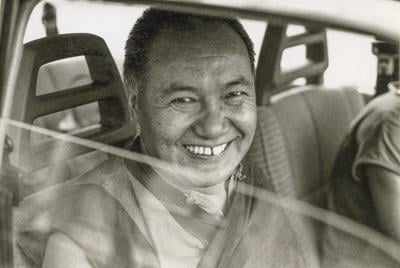Dear Friends,
I hope you are all staying safe and well. Thanks to all of you, our community of supporters, our year-end appeal is going really well and we are humbled by your support and generosity. You are amazing. Thank you! If you have not yet given and would like to, please contribute here.
While 2020 will be remembered for any number of national and global tragedies, for LYWA it will always be remembered as the year we published Big Love. It was an unparalleled joy to see it in print, and all who have seen it rejoice in the many years of loving effort that brought it to completion. You can read what people are saying about Big Love here. Recently we heard from Richard Gere about it and here's what he had to say:
What a pleasure! What a joy to have Lama’s story told by those who were there, and who love him so deeply. Few spiritual teachers have combined Lama’s light touch, skill, joy and profundity. His generous heart continues to move mountains.
We hope you have had a chance to read it, and if not, you can still order a copy. It is also a precious gift to give over the holidays.
LYWA Multimedia: The Advantages of Monastic Life
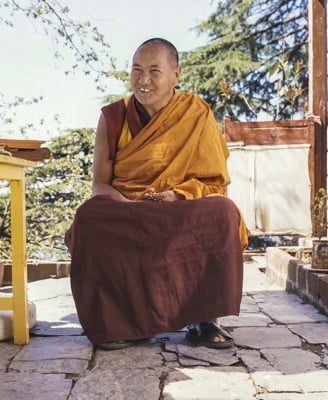 We should repeat over and over, ‘‘I am the servant of others, I am the servant of others....’’ —Lama Yeshe
We should repeat over and over, ‘‘I am the servant of others, I am the servant of others....’’ —Lama Yeshe
Our latest multimedia presentation illuminates an excerpt from a series of talks offered by Lama Yeshe to his growing Western Sangha at Tushita Retreat Centre in Dharamsala, India in April, 1982 during the first Enlightened Experience Celebration. In this excerpt Lama Yeshe speaks frankly about the challenges and opportunities facing Western Sangha and elaborates on the purpose for the establishment of Nalanda Monastery. These talks were published by LYWA in Advice for Monks and Nuns.
The full range of events during the first Enlightened Experience Celebration, including the teachings found in this multimedia presentation, are described in exquisite detail in Big Love, Volume 2, Chapter 20, “1982: A Celebration of the Enlightened Experience.” You can also read Lama Yeshe’s very first talk to his Western Sangha in Volume 1, p. 303. May the Sangha flourish in the ten directions for the benefit of all sentient beings!
On the LYWA Podcast: Pervasive Compounding Suffering
Letting go of desire is not losing; it is only gaining. It is freeing ourselves from the prison of samsara. We are put in the prison in chains but by letting go of desire we are released; we are free. —Lama Zopa Rinpoche
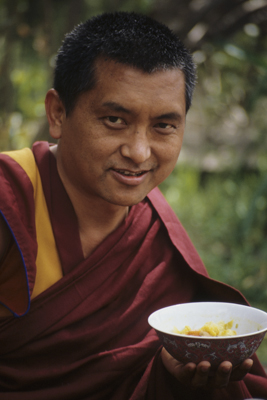 On this month’s podcast we present another session from the series of teachings given by Lama Zopa Rinpoche at the 36th Kopan Meditation Course, held at Kopan Monastery, Nepal, in 2003. In this session, Rinpoche teaches on the shortcomings of desire and how the path to liberation must start with renunciation. Rinpoche also explains the three scopes of practice and emphasizes that all three must be practiced in tandem throughout the graduated path to enlightenment. Read the transcript of these teachings here.
On this month’s podcast we present another session from the series of teachings given by Lama Zopa Rinpoche at the 36th Kopan Meditation Course, held at Kopan Monastery, Nepal, in 2003. In this session, Rinpoche teaches on the shortcomings of desire and how the path to liberation must start with renunciation. Rinpoche also explains the three scopes of practice and emphasizes that all three must be practiced in tandem throughout the graduated path to enlightenment. Read the transcript of these teachings here.
The LYWA podcast contains hundreds of hours of audio, each with links to the accompanying lightly edited transcripts. See the LYWA podcast page to search or browse the entire collection by topic or date, and for easy instructions on how to subscribe.
WHAT'S NEW ON OUR WEBSITE
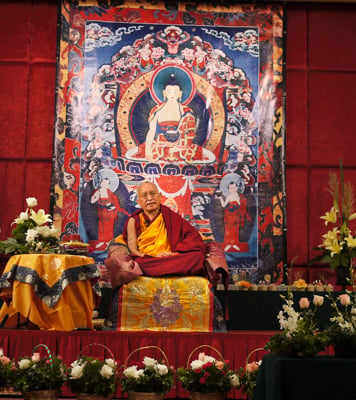 We have just posted The Eight Mahayana Precepts, a new chapter in the series Teachings at the Kadampa Deities Retreat held at Institut Vajra Yogini, France, in 2003. In this teaching Rinpoche describes the shortcomings of samsara and the kindness of sentient beings, who are the source of all our happiness, including enlightenment. After setting the motivation, Rinpoche leads students in the precepts ceremony, with commentary on the prayers and commitments, and concludes with an extensive dedication.
We have just posted The Eight Mahayana Precepts, a new chapter in the series Teachings at the Kadampa Deities Retreat held at Institut Vajra Yogini, France, in 2003. In this teaching Rinpoche describes the shortcomings of samsara and the kindness of sentient beings, who are the source of all our happiness, including enlightenment. After setting the motivation, Rinpoche leads students in the precepts ceremony, with commentary on the prayers and commitments, and concludes with an extensive dedication.- The Best Way to Be Happy: Rinpoche sent this advice about the good heart to two children whose parents were also students.
- A Good Opportunity to Serve Sentient Beings: This letter was sent to Dharma center staff after the onset of the COVID-19 pandemic in India. The centers had been asked by the Indian government to host returning migrant workers who needed to quarantine for three weeks.
- The Whole World Comes from the Mind: Rinpoche wrote to a neighbor who had been sending tiny vases of beautiful flowers to Rinpoche when he was doing retreat.
- The Power of Dharma Practice: In this advice, Rinpoche explains the two types of people: those who appear successful but are actually creating a lot of negative karma, and those who practice Dharma purely but experience many difficulties in this life.
You can always find a list of all the newly posted advices from Lama Zopa Rinpoche on our website.
A Conversation with His Holiness on the Climate Crisis
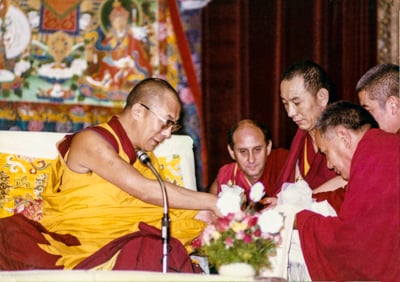 His Holiness the Dalai Lama will be in conversation with Greta Thunberg and leading scientists on the crisis of climate feedback loops on January 10, 2021 at 9 am (Indian Standard Time).(Note it will be January 9 in some parts of the world). Go here to determine your local time zone. The conversation will include clips from a new series of five short films titled Climate Emergency: Feedback Loops featuring 12 world-renowned climate scientists and narrated by Richard Gere. The conversation is sponsored by the Mind & Life Institute and the live webcast will be available in 14 languages on the official website and Facebook page of the Office of His Holiness the Dalai Lama.
His Holiness the Dalai Lama will be in conversation with Greta Thunberg and leading scientists on the crisis of climate feedback loops on January 10, 2021 at 9 am (Indian Standard Time).(Note it will be January 9 in some parts of the world). Go here to determine your local time zone. The conversation will include clips from a new series of five short films titled Climate Emergency: Feedback Loops featuring 12 world-renowned climate scientists and narrated by Richard Gere. The conversation is sponsored by the Mind & Life Institute and the live webcast will be available in 14 languages on the official website and Facebook page of the Office of His Holiness the Dalai Lama.
Nick Ribush
Director
THIS MONTH'S TEACHING: Advice from H.H. Ling Rinpoche
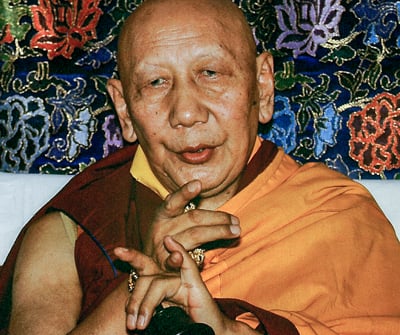 If, after receiving an initiation, you practice well, you can become like Vajradhara. This means you should keep perfectly the root and branch tantric vows and all aspects of the samayas (commitments). You should understand the samayas of eating, drinking, protection, sleeping and so forth, and study well the details of the three levels of ordination. There are teachers at your Dharma centers and you can learn all this from them.
If, after receiving an initiation, you practice well, you can become like Vajradhara. This means you should keep perfectly the root and branch tantric vows and all aspects of the samayas (commitments). You should understand the samayas of eating, drinking, protection, sleeping and so forth, and study well the details of the three levels of ordination. There are teachers at your Dharma centers and you can learn all this from them.
The purpose of taking an initiation is not to send yourself to the lower realms but to lead yourself to the state of Vajradhara. This is what you should do with the initiations you receive; they are to be practiced, not merely collected. For example, you have just received a Vajrabhairava initiation. This itself is what you have to practice; there is no Vajrabhairava practice other than what is contained in the initiation. The vows and samayas, the stages of generation and completion are all there. And unless you are illiterate you should recite the sadhana every day. If you cannot do the long one you should at least do the short one written by Lama Dorje Chang (Kyabje Phabongka Rinpoche); there are only a few pages in it.
Each day you should do the self-generation, and the six-session guru yoga, because it contains all the daily practices you have promised to do during the initiation.
All of you here are highly fortunate. You who have come from the West to this Dharma Celebration have received the highest, most profound teachings from most precious lamas, in particular, His Holiness the Dalai Lama. As far as fortune is concerned there is none greater than this.
However, each individual must practice well. There is no benefit in simply thinking, "Now I have received these teachings," and leaving it at that. If you have received some material like money, perhaps it is enough just to record it as a credit in an account book, but where initiations are involved, merely counting the number you have received is useless; you have to practice. It used to be impossible to hear Buddhadharma and meet gurus in the West. From the Dharma point of view these were barbaric lands, outlying countries to which the teachings of the Buddha had not spread. But now there are many different Dharma centers in the West, and especially through the incomparable activities of Lama Thubten Yeshe and Lama Thubten Zopa Rinpoche, many devoted to preserving and disseminating the teachings of Lama Tsongkhapa. So it is very good that you have taken the great responsibility of serving the teachings in this way, engaging in both Dharma and administrative activities to establish these centers all over the world. And although you have done very well so far and are making progress year by year, still you must continue making the efforts necessary for further progress. As the teaching spreads in this way, more and more people in the West can hear the Buddhadharma and are to that extent highly fortunate.
To ensure progress in the many centers you have established there are two aspects of activity that have to be developed together: the Dharma aspect and the administrative aspect. To develop the conditions necessary for study and practice in a center, those who do the administrative work should take proper responsibility and be in good harmony with everybody at the center. On the basis of this, all the students there should make great efforts to develop the center in whatever way possible. It's like when you have some very delicious food, you take big bites and chew it with all your teeth, taking full advantage of it—this is a Tibetan saying; I hope you understand its meaning. If you were at a place where there were gold coins for the taking you would stuff them everywhere, into every pocket and orifice! Take every opportunity to develop your Dharma center.
With respect to developing the Dharma side, it seems that most of your centers have already received resident teachers. Thus it is extremely important that you expend energy in studying well. But don't leave whatever you learn as mere intellectual knowledge; you should use it to subdue your minds and eradicate delusions. Your understanding should become one with your mind. As it is said in the lamrim teachings:
The purpose of understanding what one has heard is to enable one to practice according to their capacity.
After you have heard and understood some teaching—for example, the perfect human rebirth, renunciation, bodhicitta—you must practice it; that is the purpose of the teaching. Each one of us should practice in accordance with our individual level of mind, or ability.
We study, study, study, but if we do not mix whatever we have understood thoroughly with our minds there will be a Dharma famine in our minds; we shall suffer from poverty of Dharma. This is what happens: you live in the middle of a Dharma center, you study Dharma, but you are a Dharma pauper. So don't be like that. Use the Dharma that you have studied to change your mind, to be different from before. That is the purpose of Dharma, and if you can use it to change your mind in this way you won't be poor in Dharma. As Tewugen Rinpoche said,
Those who know the secret of turning iron into gold through alchemy never experience material poverty.
How can you become poor if you can transform any old piece of iron into gold? Similarly, if you know how to change your mind with Dharma you’ll never suffer from Dharma starvation. This is the most important thing to worry about.
Because we have not yet changed our minds, we create negative actions and accumulate many non-virtuous impressions that cause us to wander in samsara. How can we know if our mind is unchanged, unsubdued? If we are constantly concerned about the comfort of this life—food, clothing and reputation—we, have unsubdued minds. How should we change such minds? By reflecting on topics such as the eight freedoms and ten richnesses, the great usefulness of and the great difficulty of receiving the perfect human rebirth, and impermanence and death. Through this we should be able to change our minds. Also, if we are seeking samsaric enjoyments such as the pleasures of the devas, our minds are unsubdued. As a remedy we should contemplate the suffering nature of the whole of samsara and generate strong aversion to it.
Furthermore, the thought, "How good it would be if I had to remain in samsara no longer," the concern for oneself alone that abandons the welfare of other sentient beings, while generally not considered an unsubdued mind, is an unsubdued mind from the Mahayana point of view. The antidote to this is training in the loving compassionate bodhicitta and equanimity.
We should accustom ourselves to the fact that all sentient beings—friends, enemies and neutrals—are exactly equal: all desire happiness and none desire the slightest suffering, even in their dreams. Since we ourselves and all others are like that, exactly equal, we should work for the benefit of all sentient beings. All the good things we have have come from other sentient beings: our perfect human body, with its eight freedoms and ten richnesses, our meeting with the holy Dharma and the ability to practice it, our food, drink and clothing—everything. Thus of course we should work for their benefit.
To be able to work for sentient beings we must train our minds in bodhicitta and thought transformation. This starts with subduing the mind through study and reflection on the lamrim teachings. This is the most important thing and is the basis for the practice of the entire path to enlightenment. Even though the practice of tantra is so important and is the incomparable method for attaining the unified state of Vajradhara, it depends completely on the lamrim. Just as the Tibetan delicacy made of powdered cheese and butter is said to depend on the kindness of the butter, without which it would be just a pile of dry cheese, so too does the profound tantra depend on the kindness of the sutra and lamrim teachings, the graduated paths of those of the three levels of capability. Whoever tries to practice the generation and completion stages of tantra without having gone through these is like a small child gazing around a temple: nothing happens.
You should all study the lamrim thoroughly, and on the basis of that try to change your minds. That is the essential point. If you then practice the Guhyasamaja, Chakrasamvara or Vajrabhairava tantras your efforts will be incomparable and you will be able to achieve the unified state of Vajradhara. Please take this advice to heart.
And each of you should take the responsibility of spreading Dharma so that, like the rising sun, it illuminates the darkness of the world. You have been doing so; please do still more. We should all pray for success in this.
This teaching was given at the conclusion of the Yamantaka initiation on April 24, 1982 during the first Enlightened Experience Celebration (EEC1), Dharamsala, India. Translated and clarified by Lama Thubten Zopa Rinpoche, edited by Nicholas Ribush, Dharamsala, June 1982. You can find this teaching in a report on the EEC1 on our website.
























